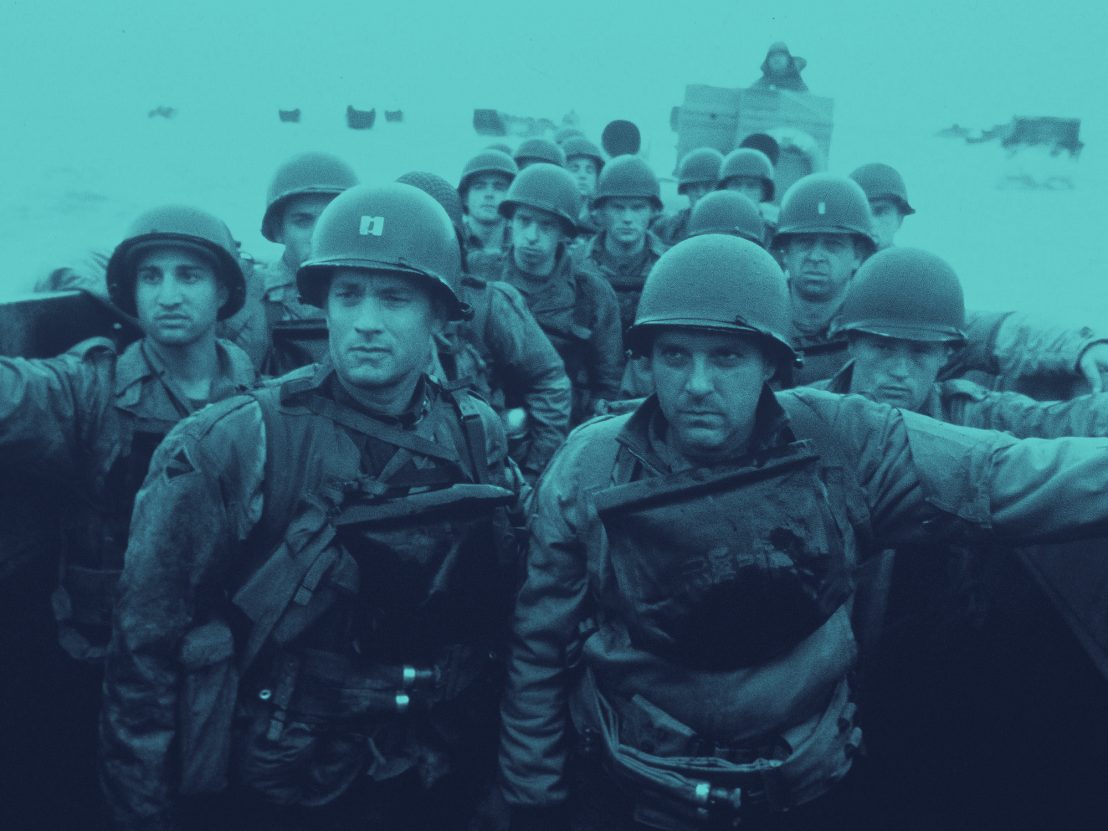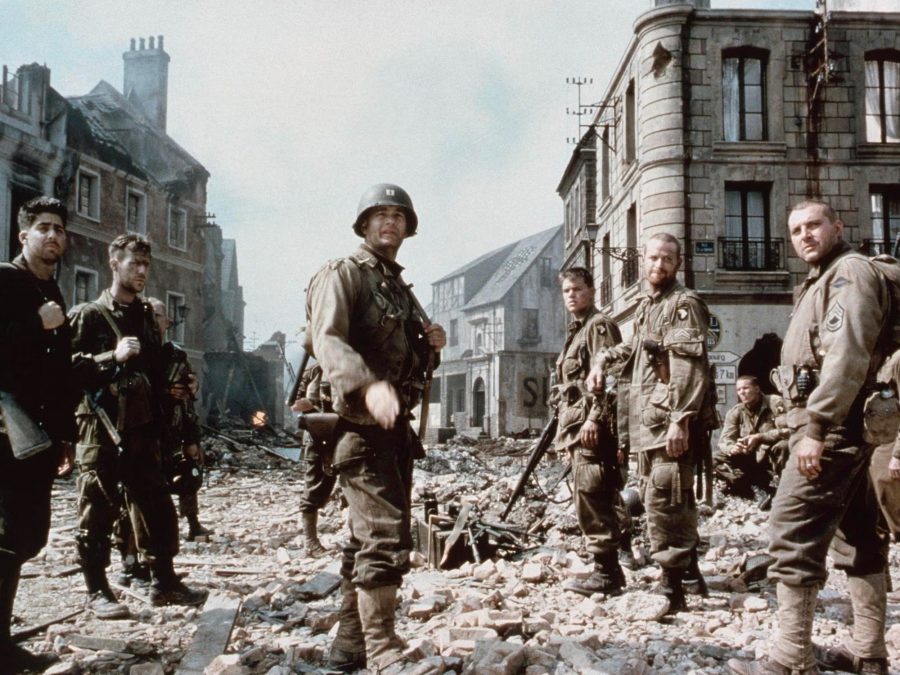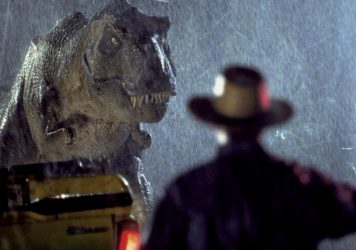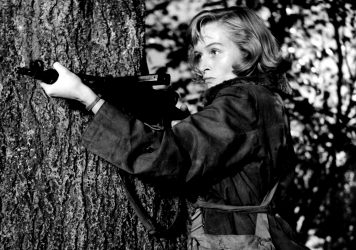
When Saving Private Ryan first screened 25 years ago, critics and war veterans alike cited it as the most realistic portrayal of war ever seen on film. This was not the World War II of The Guns of Navarone or The Great Escape; Saving Private Ryan – particularly its D-Day landing sequence – aimed to emulate the terror, fear and unimaginable violence of war through a realism-led approach to its cinematography.
Despite the complexity of Steven Spielberg’s approach to the war scenes, pre-production on Saving Private Ryan was significantly truncated by the director experiencing a particularly prolific streak, shooting Jurassic Park sequel The Lost World and historical drama Amistad back to back. Spielberg and cinematographer Janusz Kaminski (who he had just worked with on Schindler’s List) were heavily influenced by the contemporary war photography of George Stevens and Robert Capa, as well as the propaganda films of Leni Riefenstahl, and the accounts given by actual veterans, including Spielberg’s own father Arnold who was drafted into the military in 1942.
In the past, Spielberg – who was born the year after his father returned from the war – has been open about how the Second World War loomed large in his consciousness. His father would tell war stories and veterans would frequent his house as a child, while the family had an awful relationship with the Holocaust, having lost an estimated 20 relatives in the genocide.
Because of Spielberg’s close connection to the war, he knew the ways in which he didn’t want to make a war movie. The Second World War was more than a shadow on Spielberg’s career. He’d already made five films set in the period – albeit radically different ones that ranged from adventure epics to Holocaust biopics – but Saving Private Ryan felt like the director’s definitive statement on the subject as he sought to get as close to recreating war as possible.
There was a precedent of sorts for Spielberg’s boots on the ground, ‘Let’s do war as close as we can to the real thing’ approach. 1962’s The Longest Day was famously filmed on actual WW2 battlefields and Leslie Norman’s 1958 Dunkirk deployed some 2000 extras, but Spielberg yearned to take the audience inside war like never before. There were small details he learned from veterans – GI’s vomiting as they approached the beach from seasickness and fear; dead fish floating on top of the water; the blue ocean stained red with blood – that would completely immerse viewers and set the standard going forward for war films.
France’s Omaha Beach was recreated in Ireland over about four weeks to the cost of $12 million, with a cast and crew of around 1500 people, to create the D-Day Landing sequence. Spielberg and his vast team had roughly a kilometre of the shore to themselves and essentially rebuilt wartime Normandy complete with battlements, concrete bunkers and defence nests.
Spielberg shows much of the landing from a soldier’s point of view (a technique that would later heavily influence video games including Spielberg’s own brainchild the Medal of Honor series as well as the hugely successful Call of Duty franchise). For the first time, we see war through the terrified eyes of the men who were there. The subjective technique sees the camera frequently disappear underwater as the march to the beach is made. The camera literally goes up and down beneath the ocean, a technique achieved by mounting a camera on a crane on the back of a flatbed truck which was then driven into the sea. Spielberg also makes use of several handheld cameras in this sequence, all of them manoeuvring in a coordinated fashion around the lifelike set, immersing the viewer in the fog of war.

Spielberg’s recreation of the assault made use of actual Higgins boats used in the landings and to achieve the all-consuming effect of war, they rigged a section of the beach the size of a large field with blood squibs and mortar explosives, shooting usually just one or two long takes. Fake blood would often unintentionally splatter against the camera but they kept on shooting, believing it enhanced the realism, especially with the effects crew burning barrels of diesel to create flumes of black smoke in the air. The movements of the many hundreds of actors had to be choreographed to the most minute detail because of the mortars placed across the beach (amazingly the only on-set injury was an extra whose foot was run over).
The shot where Tom Hanks makes the dash to the cliff edge was filmed in exactly that manner. Spielberg called action and hundreds of extras sprung to life, explosives were detonated, and the most famous actor in the world sprinted across a beach followed by a cameraman carrying a 34-pound camera on his shoulder. It was one of the first scenes shot and was completed in one take, setting the tone for the rest of the shoot.
This proved to be pretty gruelling if you happened to be a camera operator. Most of the film, especially the action sequences, was filmed using handheld cameras and these cameras were not light. Spielberg also wanted the camera at awkward heights such as near the ground, which meant the operators were often running around a beach, dragging a camera close to the floor while trying to avoid actual explosions, and also protecting the equipment from the sand. It was a herculean challenge of filmmaking.
On a purely technical level, Saving Private Ryan upended the war movie. It became a benchmark for depictions of war in the same way Jurassic Park was for special effects or Raging Bull was for boxing. Combined with wide praise from veterans for the film’s accuracy, you had a picture that would loom large over the next 25 years of war movies.
Ridley Scott embraced Spielberg’s immersive techniques with Black Hawk Down, implanting Saving Private Ryan’s visceral opening 20 minutes across two and a half hours in Somalia. Christopher Nolan has also been vocal about the debt his own WWII epic Dunkirk owes the film, asking Spielberg for advice on how to approach shooting, especially with regards to having an unseen enemy (both movies feature very few Nazis).
Saving Private Ryan’s influence can also be seen in Sam Mendes’ Oscar-winning 1917. As the now viral behind-the-scenes footage of filming shows, Mendes embraced Spielberg’s practical approach to filmmaking with the final sequence requiring actor George Mackay to run 300 metres with 500 extras in the background and explosions being set off everywhere.
Cinematic technology has evolved and heavy CGI usage has become the standard for large-scale war films, but to this day nothing beats a man and a movie camera running around on an Irish beach.
Published 20 Sep 2023

Steven Spielberg’s beloved 1993 movie is about so much more than dinosaurs.

By Paul Risker
Nearly 50 years since Jaws changed the shape of cinema, the term 'blockbuster' has come a long way – but not always for the better.

By Lena Hanafy
These films show the different ways women joined the war effort, often away from the home front.